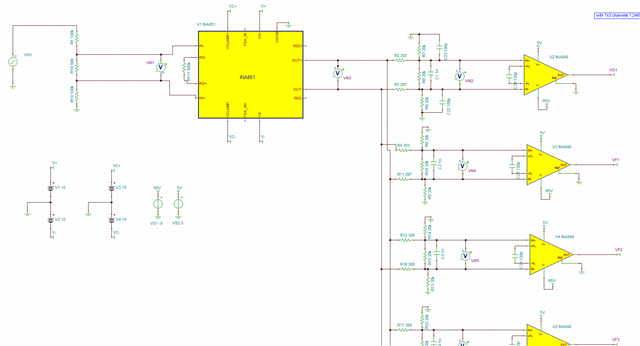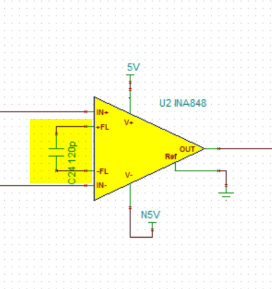Other Parts Discussed in Thread: INA848
Tool/software:
Hi,
I'm using INA851 to drive a small signal to multiple instrumentation amplifiers for a calibration path,
the INA851 is feeding in parallel multiple instrumentation amplifiers with gain 2000 ( INA848),
one main problem is due to the offset voltage in its output which is amplified more after the INA848, i'm wondering if it can be improved or is there another FDA amplifier solution,
the other problem is the capacitive load but we might can live with it,
the INA 851 is used to buffer between a precision voltage divider that served as attenuator for calibration the gain of the INA848 amps used for sampaling analog signals by on bpard ADCs
the voltage divider cannot be loaded by the buffer because it made by 100K and 1K resistor values this is the reason i'm using the FDA instrumentation amp INA851.
 I
I
can see the offset also in TINA simulation which is about 300uV,
Please advice,
Thanks,
Barak


